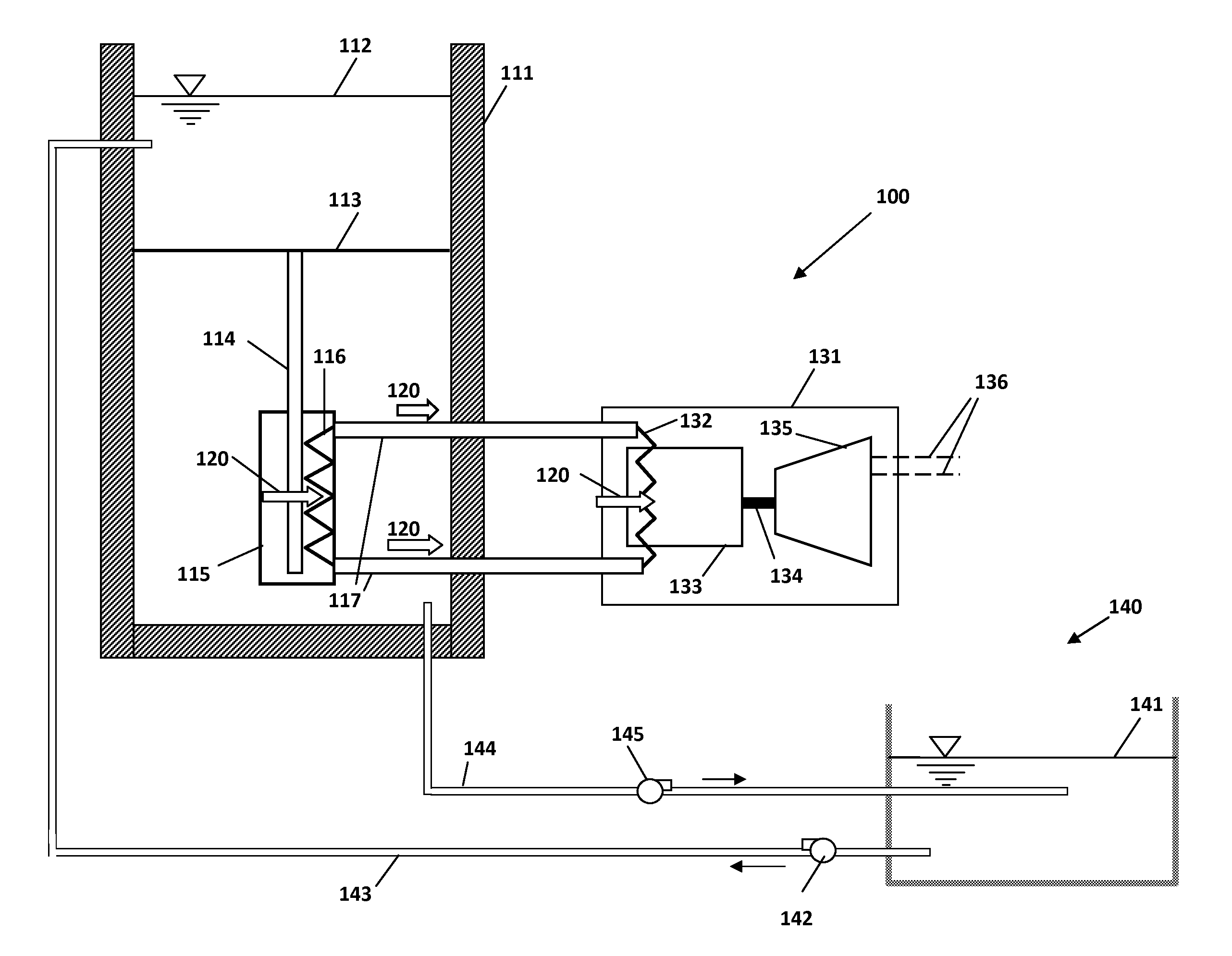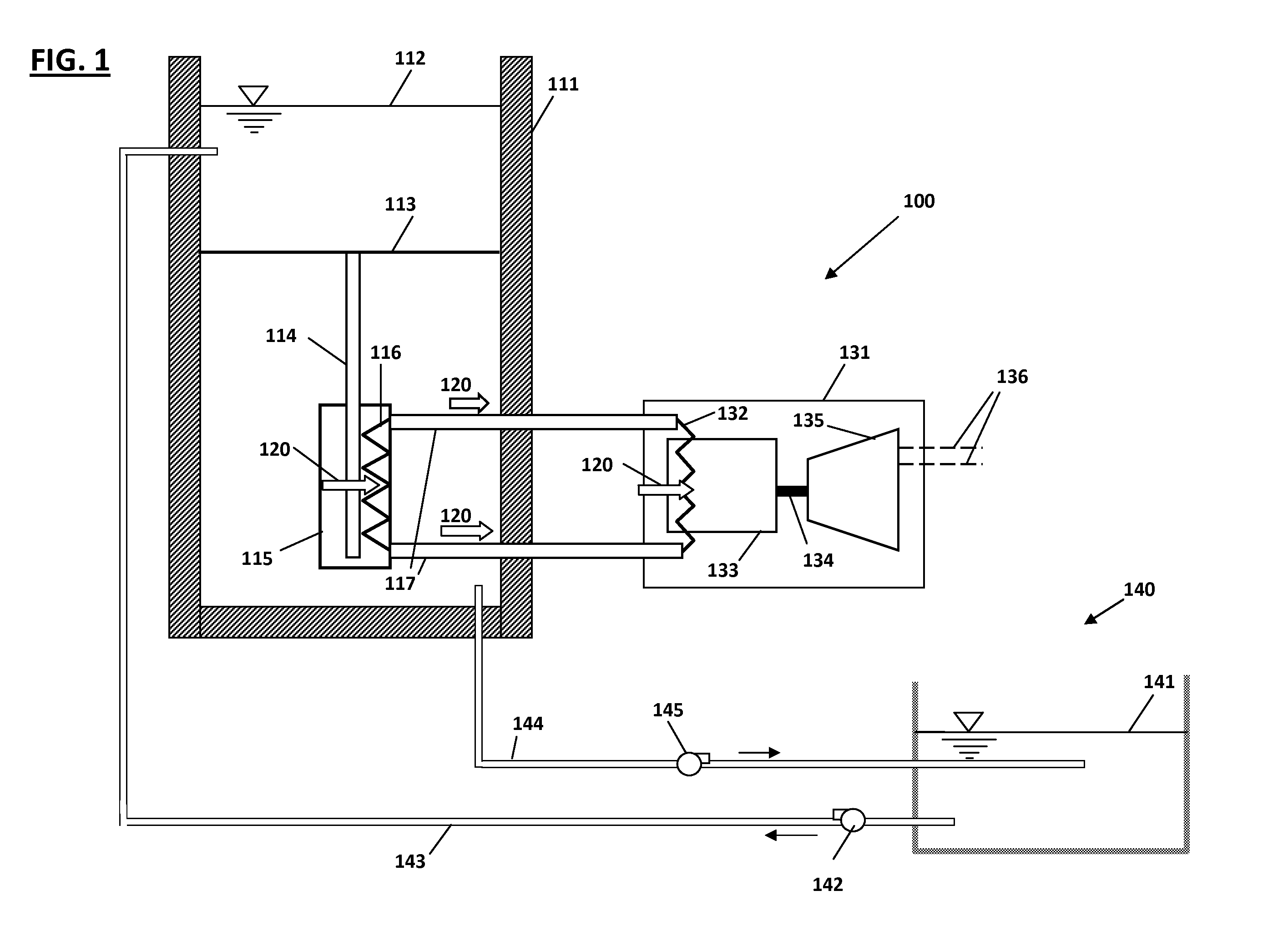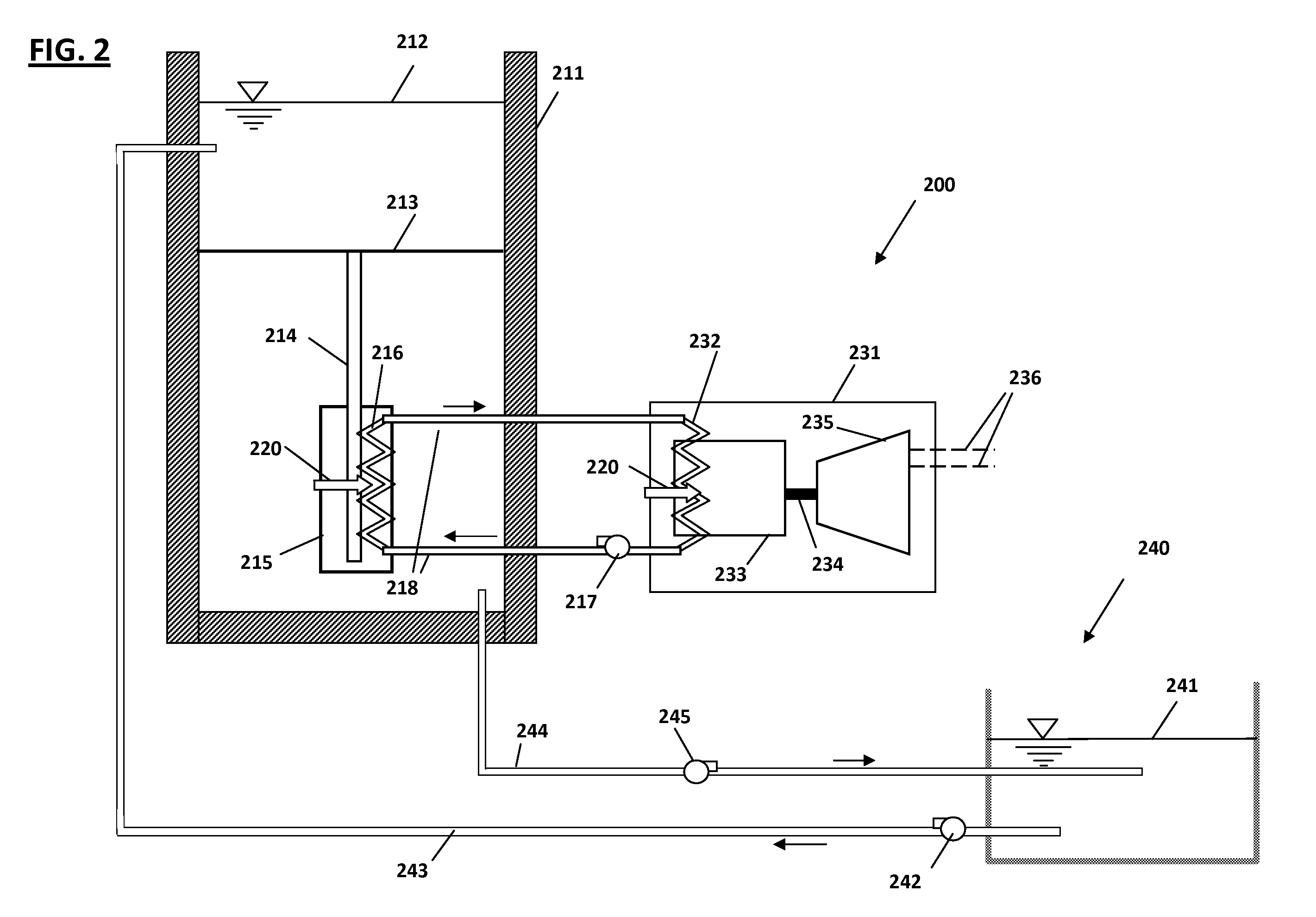Self Powered Cooling
a self-powered cooling and cooling system technology, applied in nuclear power plants, greenhouse gas reduction, nuclear engineering, etc., can solve the problems of failure or disruption of the operation of cooling systems, stoppage of main process with adverse and undesirable consequences, and meltdown with catastrophic consequences, so as to prevent material damage and be immune from external power outages
- Summary
- Abstract
- Description
- Claims
- Application Information
AI Technical Summary
Benefits of technology
Problems solved by technology
Method used
Image
Examples
Embodiment Construction
Referring first to FIG. 1, there is shown an apparatus 100 that harnesses the thermal energy 120 of the spent fuel rod 114 to power the nuclear power plant cooling system 140, according to one embodiment of the invention. Heat exchanger unit 115 is accumulates the thermal energy 120 of the spent fuel rods 114 held by support 113 inside the spent fuel rod storage pond 111 by controlled shielding of the spent fuel rods 114 from the surrounding cooling water 112 so as to achieve a pre-determined elevated temperature inside the heat exchanger 115. Internal element 116 transfers the thermal energy 120 to heat conductors 117 which convey it to the electrical power generation unit 131 by heat conduction. The latter consists of a heat engine such as a Sterling Engine 133, which receives the thermal energy 120 via element 132 and converts it to mechanical energy that drives the electrical generator 135 via transmission system 134. Electricity generated by unit 131 is transmitted via electric...
PUM
 Login to View More
Login to View More Abstract
Description
Claims
Application Information
 Login to View More
Login to View More - R&D
- Intellectual Property
- Life Sciences
- Materials
- Tech Scout
- Unparalleled Data Quality
- Higher Quality Content
- 60% Fewer Hallucinations
Browse by: Latest US Patents, China's latest patents, Technical Efficacy Thesaurus, Application Domain, Technology Topic, Popular Technical Reports.
© 2025 PatSnap. All rights reserved.Legal|Privacy policy|Modern Slavery Act Transparency Statement|Sitemap|About US| Contact US: help@patsnap.com



